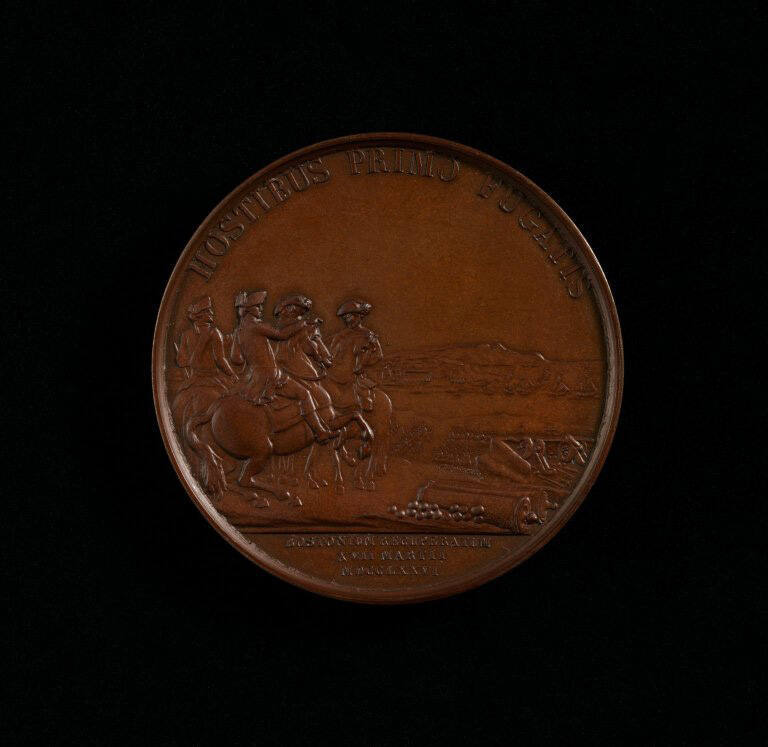Pierre Simon Duvivier, United States Mint
General George Washington / Evacuation of Boston Medal



Object Details
Artist
Pierre Simon Duvivier, United States Mint
Date
1860
Medium
Bronze
Dimensions
Diameter: 2 11/16 inches (6.8 cm)
Credit Line
Gift of Janet Marqusee, Class of 1952, and John E. Marqusee, Class of 1951, for the Frank and Rosa Rhodes Collection
Object
Number
94.007.021
BRIEF DESCRIPTIONThis medal commemorates the evacuation of the British from the city of Boston follo(…)
BRIEF DESCRIPTIONThis medal commemorates the evacuation of the British from the city of Boston following George Washington’s decisive victory.WHERE WAS IT MADE?The original of this medal was made from gold in France in 1790, 14 years after the Continental Congress authorized its creation. Subsequent editions of the medal were struck from the original dies in Paris, and from copies of the dies (made by Charles Barber) in the United States.WHO WAS THE ARTIST?Pierre Simon Benjamin Duvivier was the son of Jean Duvivier, an important French medalist. Because Jean Duvivier feared being surpassed by his son, Pierre had to find a way to study on his own. One story recounts that Jean drove Pierre from his home when he caught the boy copying a medal. Following his father’s death, Pierre became medalist to the King of France and his work was exhibited in the Salons.HOW WAS IT MADE?Medallic art is a type of small-scale sculpture. The tradition of making medals is rooted in the portrait medal tradition that became popular in the Renaissance. The process of striking medals began in the 17th century when it surpassed the older method of casting. Striking is a method where a metal die (with a design in relief) is essentially stamped, with great force, onto a blank piece of metal. This technique can rapidly produce multiple copies. The invention of the engraving machine for die sinking and casting in the 19th century allowed artists to concentrate on medal designs rather than the actual engraving and cutting of the die. The pantograph machine allowed artists to render medals in a larger size in wax, clay or plaster before reducing and engraving them later mechanically. Two dies are made for each medal, one for each side (unless the medal has only one side.)WHY DOES IT LOOK LIKE THIS?This medal commemorates George Washington’s victory in Boston and the evacuation of the British in March of 1776. Notice that the obverse (front) of this bronze medal features George Washington’s bust in profile. The reverse depicts General Washington on horseback along with three other officers upon a hill, overlooking Boston. Notice the lines of soldiers in the distance as well as ships pulling in and out of port. Cannons and other weapons are seen to the right of the horses.












